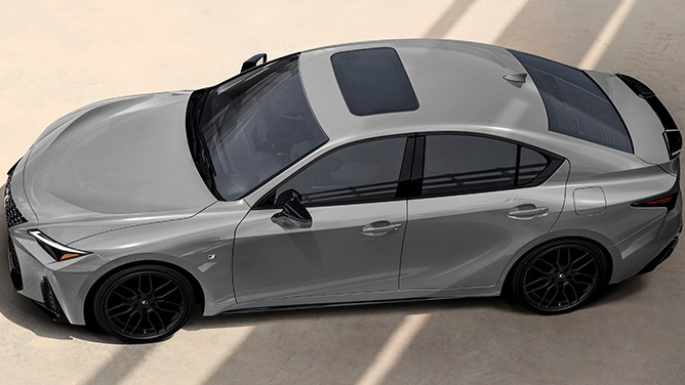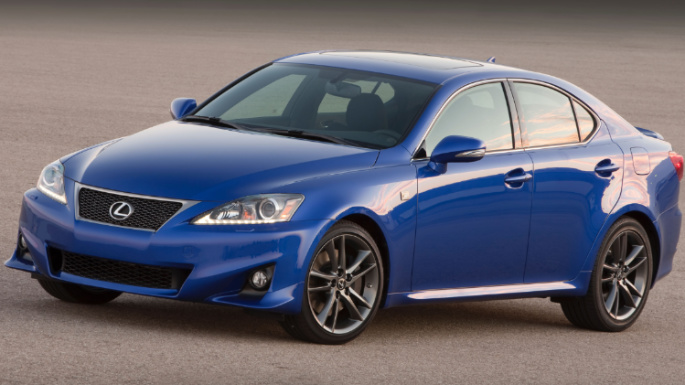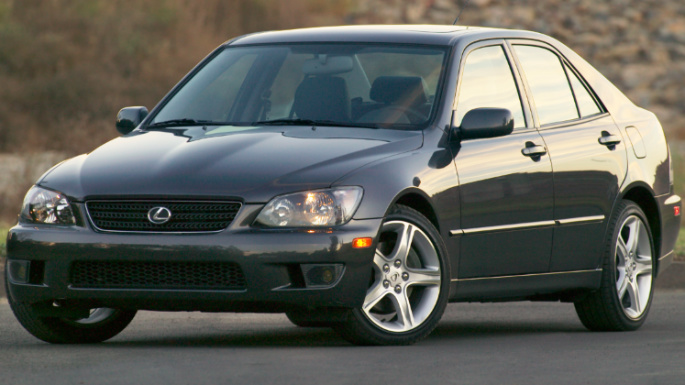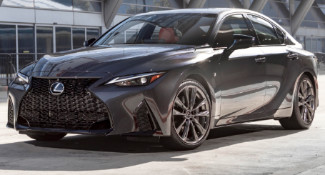Lexus built its reputation on quiet, luxurious cars that bested European and American premium competitors but for a fraction of the price — and were better engineered. That worked well for about a decade with the popular ES and LS sedans, as well as with the LX and the RX SUVs. What they ended up with, however, was a very staid clientele when rivals’ smaller models had a much more youthful image.
Enter the Lexus IS. Introduced in 2001, it was a rear-wheel drive, six-cylinder compact sports sedan that was badly needed to add some new blood to its image. The IS started small but quickly became a core product in Lexus’ sedan range.
2014 - Present Lexus IS (XE30 3rd Generation)
The current Lexus IS debuted for the 2014 model year, only with the sedan body style. The IS convertible was ultimately replaced by the RC coupes, which were spun off into a separate line. Underneath, the IS was a modestly updated version of the previous vehicle, still rear-wheel drive, but eventually given new engines and stretched for more interior space – a particular criticism of the previous generation.
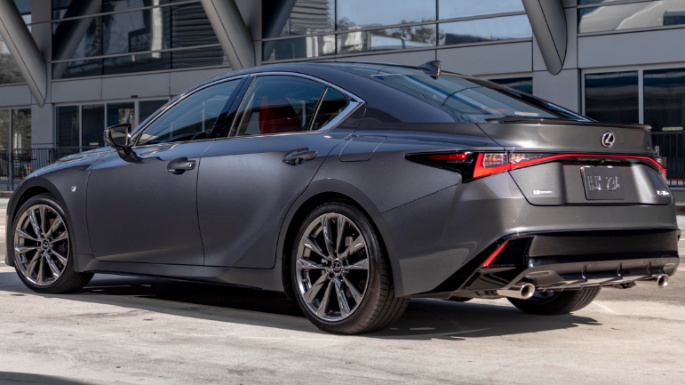
As before, the Lexus IS 250 and IS 350 continued with either rear-wheel drive or optional all-wheel drive with a six-speed automatic transmission. The available six-speed manual, however, wasn’t offered on any engine this time. The interior received a significant makeover with a new design and lower dashboard for better visibility, and the infotainment system used Lexus’ latest mouse controller rather than the previous touchscreen.
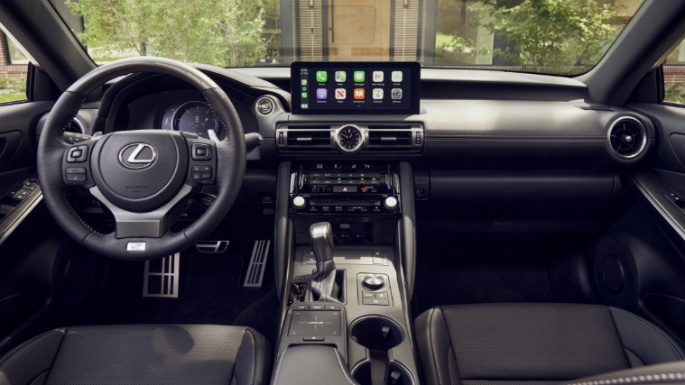
For 2016, the rear-drive IS 250 was replaced by the IS 200t, which used a new 241-horsepower, turbocharged 2.0-liter four-cylinder engine and a new eight-speed automatic transmission. Fuel economy was modestly improved, but performance made a greater jump.
The following year, the IS 300 AWD replaced the IS 250 AWD, also using the turbo four from the IS 200t (later renamed the IS 300) and eight-speed automatic. An F Sport package was also introduced as an appearance package on the IS 300 and, on the Lexus IS 350, included a limited-slip differential.
The IS didn’t receive many changes until the 2021 model year when the third-generation model received its first significant facelift. The 'spindle grille' and lights were updated to reflect newer Lexus sedans, and the rear lights were now connected by a thin strip. There were suspension revisions across the board and the F Sport performance package (which now included its own sub-option – the Dynamic Handling Package) was now only available on the IS 350.
However, since the old IS F wasn’t renewed for the third-generation IS, Lexus finally threw enthusiasts a bone the following year with the IS 500 F Sport Performance. Serving as a 'not quite' solution, the 500 used the same 5.0-liter V8 as the IS F, now with 472 horsepower. There were new variable suspension dampers, staggered 19-inch wheels, and quad exhaust tips — but Lexus insisted it wasn’t a full-blown F model.
2006 - 2013 Lexus IS (XE20 2nd Generation)
The second-generation IS appeared in late 2005 for the 2006 model year and was clearly identifiable as a Lexus. That wasn’t a huge surprise, because it was developed on a platform shared with the larger, RWD Lexus GS and various Japan-only Toyotas. In fact, it was Toyota’s most significant shot at German luxury brands yet.
For the first time, the IS was available in the US with two engines and four powertrain configurations: a 204-horsepower, 2.5-liter V6 engine or 306-horsepower, 3.5-liter V6 with a six-speed automatic and rear-wheel drive; the 2.5-liter V6 with a six-speed manual gearbox; or the 2.5-liter V6 and automatic with AWD. Lexus, however, dropped the SportCross wagon.
Not only did the new IS look much more like the rest of the Lexus lineup on the outside, but the interior was a better fit, with very similar controls, screens, and materials. Real leather upholstery was widely available and it reinforced that the new model was a scaled-down GS — much in the way the BMW 3 Series lined up with the larger 5 Series. The 2006 model was also much more technologically advanced than its predecessor, with new features including adaptive cruise control, keyless entry and start, voice recognition for the navigation system, Bluetooth connectivity, and a backup camera.
Sales for the 2006 IS were far stronger than those of the first-generation model, so much so that few changes were made for 2007.
For 2008, Lexus added the high-performance IS F to complete the attack on BMW M models (specifically the M3), as well as Mercedes-AMG and Audi RS. At the heart of the Lexus IS F was a 416-horsepower, 5.0-liter V8, and a trick eight-speed automatic transmission, while maintaining rear-wheel drive. Other modifications included a half-inch lower ride height, fender bulges, side air vents, four-passenger seating, and trademark quad exhaust pipes integrated into a new rear bumper cover.
As another development, a convertible, arrived as a 2010 model. Available as the IS 250C, IS 250C AWD, and IS 350C, this new Lexus convertible didn’t entirely replace the outgoing SC 430 even though it used a similar folding hardtop. However, it offered reasonable seating for four passengers and a somewhat usable trunk area.
Standard IS models received a very modest facelift that year. The bumpers and lights were modestly revised, while the power steering system was recalibrated, and the rear-seat room was modestly increased due to space criticisms.
AWD availability increased in 2011, with the introduction of the IS 350 AWD sedan, while the IS F gained a Torsen limited-slip differential.
Other than that, the second-generation IS stayed put until a new model arrived in the summer of 2013. The IS F and IS C, however, hung around for another year.
2001 - 2005 Lexus IS (XE10 (1st Generation)
The Lexus IS 300 arrived in the US for the 2001 model year. Closely related to the Japanese-market Toyota Altezza, the IS 300 offered Lexus buyers a simple choice for a compact sports sedan that competed head-on with the BMW 3 Series, among others.
Every model used a 215-horsepower, 3.0-liter six-cylinder engine, which was slightly more than the comparable BMW 328i’s 2.8-liter six-cylinder. A five-speed automatic was the only choice of transmission, and all were rear-wheel drive. These attributes, apart from sports coupes, were very unlike Lexus at the time.
The IS was also a significant departure from a Lexus in terms of opulence. All Lexus models up until 2000 were leather-lined, wood-grained, and plush vehicles — even the SUVs and coupes. Now the IS sports sedan, using an almost-identical interior to the Altezza, featured part leather/part faux suede, had a chronograph watch-style instrument panel, and even a chrome gear knob. Leather was kept to a minimum and there wasn’t a hint of wood. In short, it was a very different kind of Lexus. The exterior was distinguished by clear-lens taillights that became a popular aftermarket addition in the early 2000s.
Two significant changes arrived in 2002: a wagon and a manual transmission. The IS 300 SportCross was a sports wagon in the vein of the 3 Series Touring, the Audi A4 Avant, and the Mercedes-Benz C-Class wagon, all emerging in force around the same time. What it lacked in load-lugging space (and it lacked a lot) hardly impacted the way the IS drove.
What impacted things more, though, was the five-speed manual gearbox, which was conspicuous by its absence when the Lexus was launched. It might not have been as slick as a BMW’s, but it filled a gap in the class. Unfortunately, the manual was only available with the sedan.
Sales for the IS 300 in the US were modest, to say the least, with even bit players like Saab shifting more than four times as many sports sedans as Lexus in the same period. Save for some special edition models and minor exterior and interior changes, the first-generation Lexus IS faded into obscurity by 2005, ahead of a more tailor-made replacement.
